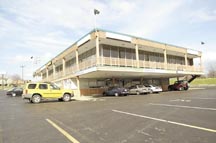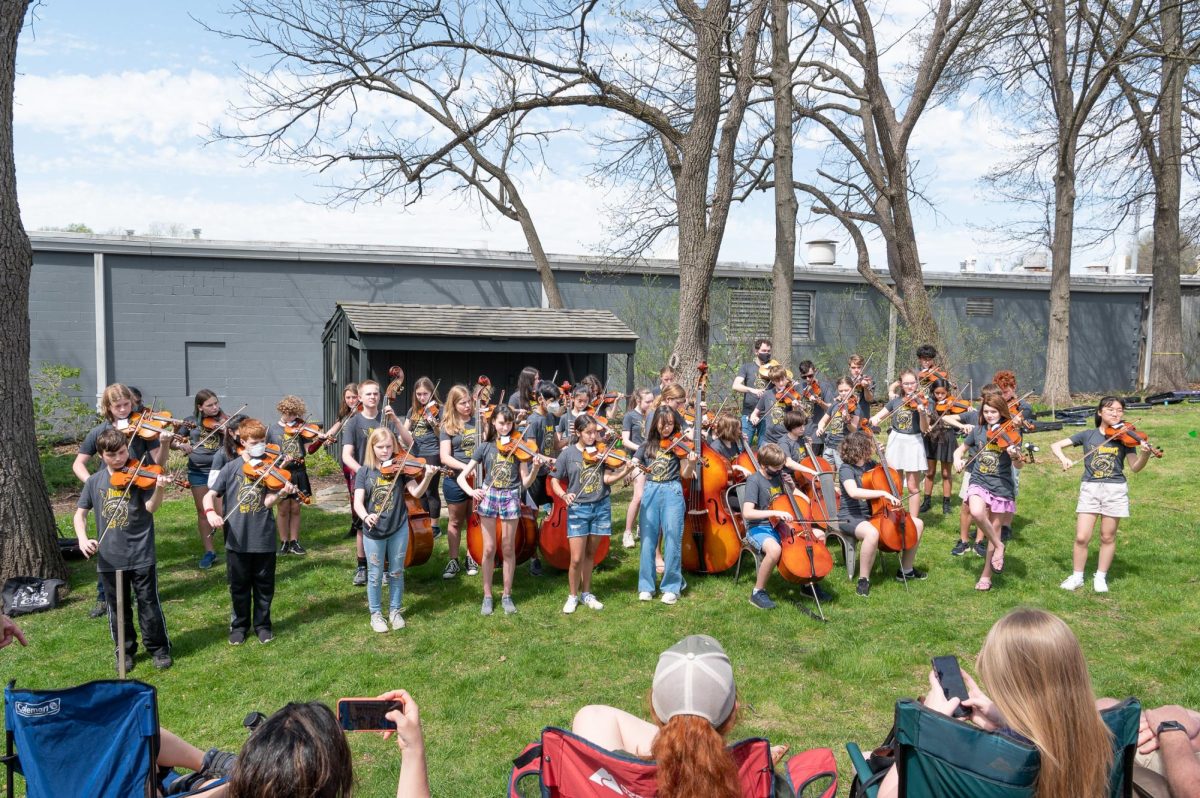
By MIKE ANTHONY
Executive Editor
The Crestwood Board of Aldermen recently took another step toward the redevelopment of the southeast corner of Watson and Grant roads by approving the appointments of five residents to the city’s Tax-Increment Financing Commission.
But members of the Boegeman family, who own one of the two parcels of the proposed redevelopment area, again told aldermen they will not sell their property and vowed to fight any efforts to acquire their property through eminent domain.
The Boegeman family proposes to spend $150,000 to $200,000 to renovate the Creston Center and the renovation plan has been approved by the city.
Mills Properties is proposing to redevelop the nearly 19-acre Hillside Village site as Boulder Springs at Crestwood – similar to the Boulder Springs at Maryland Heights project that Mills completed in 2000 at Interstate 270 and Page Avenue.
Mills Properties is proposing a $45 million development that would include about 240 luxury apartment units and 26 luxury condominiums. As proposed, the project could involve the use of TIF assistance and the creation of a Neighborhood Im-provement District – two tax tools used to help offset the cost of public improvements.
The proposed redevelopment site is comprised of two parcels. The larger of the two parcels contains Value City and is owned by Joe Grasso, while the smaller parcel contains the Creston Center and is owned by the Boegeman family.
During their March 25 meeting, aldermen also heard the city’s planning consultant, John Brancaglione of Peckham, Guyton, Albers & Viets, present the preliminary findings of a blight analysis conducted of the two properties to determine whether the proposed redevelopment area would qualify for TIF assistance.
The five residents whose appointments to the TIF Commission were approved by the board are: Jerry Bratsch, Pat Kapsar, Forrest Miller, Philip Sidlo and Carol Wag-ner. A sixth city representative on the 12-member panel is needed.
Of the 12 members of the TIF Commis-sion, six are appointed by the city, three are appointed by St. Louis County, two are appointed by the Lindbergh Board of Ed-ucation and one is appointed by other taxing districts affected by the proposed redevelopment.
The TIF Commission is an advisory board that would consider the proposed redevelopment plan, conduct public hearings and ultimately make a recommendation to the Board of Aldermen if aldermen decide to pursue Mills Properties’ redevelopment proposal.
In a TIF district, tax receipts for school districts, fire districts and other taxing entities are frozen at existing levels for the length of the TIF, which can be up to 23 years. As land within the TIF district in-creases in value, the incremental tax revenue – 100 percent of property taxes and 50 percent of sales and utility taxes – is used to retire the TIF obligation.
In his presentation, Brancaglione said that the proposed redevelopment site would qualify as “conservation area” under the state’s TIF statutes. The conservation area designation is “predicated upon the notion that it’s an area not yet blighted, but could easily become blighted if the factors that are present aren’t dealt with in one way or another …,” he said.
To qualify as a conservation area under the TIF statutes, 50 percent or more of the structures in a proposed redevelopment area must be 35 years old or older, Bran-caglione said. In addition, three of 14 factors must be present to meet the conservation area.
“So with that, let me say that we find that 50 percent or more of the structures are 35 years old or older,” Brancaglione told the board. “There are seven of the 14 factors present: obsolescence, deterioration, presence of structures below minimum code, excessive vacancies, excessive land coverage, depreciation of physical maintenance and lack of community planning.”
Among other issues considered are equalized assessed valuation and the vacancy rate of the properties, he said, noting the equalized assessed value of the proposed redevelopment area had declined 12.4 percent from 1997 to 2002.
“In addition, the total area vacancy is 14 percent,” Brancaglione continued. “Now that’s considered a high number by retail development standards in terms of vacancy. As you know, some of the space in the wing on the Value City building, at least to our knowledge, has never been occupied from the day it was built. If we look at that, in and of itself, it’s a vacancy rate of 64 percent. There is a total altogether of something ap-proaching 32,000 square feet, just under 32,000 square feet, that is vacant,” he said.
“In summary, in our opinion, the area clearly qualifies as a conservation area under the definitions of the statute and under every review of those definitions we’ve seen in other situations and so I believe that we can clearly say that the area meets the test as a conservation area,” he said.
Ward 3 Alderman Don Maddox said he had requested at the previous meeting that Brancaglione evaluate each site separately.
“… I specifically asked at our last meeting if this evaluation would evaluate each property separately. That has not been done,” Maddox said. “I do request that this evaluation be done, that the Creston Center be separated and evaluated separately … Another question I have for you: Did your assessment include consideration of the plan of redevelopment for Creston Center, which has been approved by Planning and Zoning and also by this board?”
Brancaglione replied, “No sir. There are two things that the statute requires – and certainly we can do as you ask – but the statute says that if you are contemplating an area, it is the area that either qualifies or doesn’t qualify. So you normally do not look, while you look at independent properties in terms of meeting the qualifications and when you read what’s in here you will see references to factors that are found on one property vs. the other, but the statute says that the area as a whole must qualify, so the way this is written really goes to that issue.”
Maddox said, “I understand that, but that does not respond to what I had previously requested and had been advised would be done by this administration. Also on vacancies, did you look into what the vacancy status was before the RFP (request for proposals) was issued?”
Brancaglione said, “No.”
Maddox said, “Because the RFP does have a major impact on filling vacancies.”
Brancaglione said, “I would agree that that may certainly be the case. Again, the statute requires that the evaluation be taken as if it were a snapshot in time. In other words, it either qualifies or it doesn’t qualify at the time at which the property is evaluated.”
Maddox interjected, “Except that an RFP tends to establish a self-fulfilling prophecy. You know, it tells people this property is not going to be available for your use within ‘X’ months, ‘X’ years and therefore it drives away potential tenants. If you take the snapshot after the RFP is issued, then, of course, vacancy rates should be higher than it would have otherwise been.”
Brancaglione said, “I would concur. However, I also would point out that there are seven factors here and only three need to be in existence for the area to qualify. So if we took vacancy as a factor out of the equation because of the valid argument you’re making, it still would qualify. It wouldn’t change, in my opinion, the qualification.”
Maddox said he wanted separate reports done for both the Creston Center site and the Value City site and Brancaglione said that could be done at no additional cost to the city.
In a separate matter, aldermen indicated they wanted City Administrator Don Greer to take the next step in pursuing a redevelopment proposal submitted by G.J. Grewe Inc. for Watson Plaza.
Aldermen discussed the redevelopment proposal during a work session before the start of the regular meeting. G.J. Grewe’s $12.5 million redevelopment proposal calls for a Gordmans and a PETCO as well as retaining existing tenants.
Among the changes proposed by G.J. Grewe are a new Gordmans that would oc-cupy the former Service Merchandise build-ing, a new PETCO that would be built next to Gordmans and a new Walgreens that would be built on the site of the former Tippins, plus improvements to the intersection of Glenwood Drive and Watson Road for improved access to Watson Plaza.






















